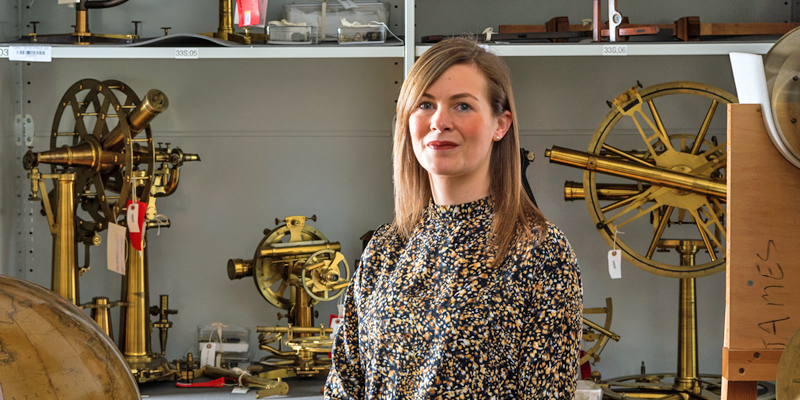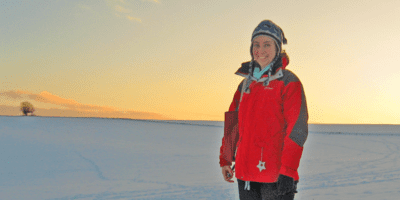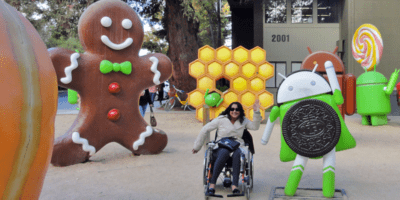Jessica Bradford is head of collections and principal curator at the Science Museum where she leads projects which engage people with science, technology, engineering, mathematics and medicine. She has extensive experience of researching and developing compelling content for wide-ranging audiences. Jessica currently leads a team of curators, archivists, librarians and researchers to develop and share knowledge from the Science Museum Group’s historic collection.
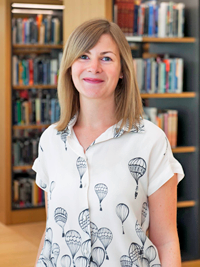
“One of the Science Museum Group’s core values is being ‘Open for All’. We are committed to playing our part in enabling more people to engage with and participate in science.”
A career combining art and science
From a young age, I was drawn to science and imagined a career as an engineer or surgeon. At school I became increasingly interested in history and literature and chose to study a mixture of art and science subjects in the sixth form. I went on to study history as an undergraduate, before completing an MSc in the History of Science, Technology and Medicine, both at the University of Oxford. The history of science offered a perfect combination of my interests – an opportunity to explore and investigate the past, whilst staying connected to the world of science.
When I finished my master’s, I joined a graduate teaching programme. Though in the nine months before I started on the programme, I accepted a fixed-term role at the Science Museum, researching stories for a new gallery about the ‘making of modern science’. Twelve years later, I am still here! I immediately fell in love with museum work, and especially combining my academic interests with creating engaging and accessible experiences for visitors.
I have been fortunate to have a range of roles in the museum. I led small-scale rapid response displays and science dialogue events, as well as leading the curatorial team through an ambitious programme for the Information Age gallery to create innovative audience participation projects and over ninety digital exhibits. As interpretation manager for Masterplan Projects, I worked on Medicine: The Wellcome Galleries, and the award-winning Mathematics: The Winton Gallery to develop and deliver the audience strategy, text and exhibits.
For six years I was keeper of collections engagement and was responsible for sharing the astonishing stories embedded in the collection with a growing global audience. As well as reimaging in-person access for researchers, schools and the public at our National Collections Centre in Wiltshire, I worked closely with the digital team to enhance access to collections online, through blogs, articles, video and audio.
I am now head of collections and principal curator, leading a brilliant team of curators, archivists, librarians and researchers to develop and share knowledge about the incredible Science Museum Group Collection.
Bringing objects and stories to life
One of the best things about my role is how hugely varied it is. There is no such thing as an ordinary day at the Science Museum! Curators play a key role in developing new exhibitions, galleries and events, and these projects are always a team effort.
At the early stages of any new project, we’ll meet with leading scientists, and other experts in a particular field, to gather ideas and inspiration for the stories and objects. One of my favourite parts of the role is working with architects, designers and exhibit developers to later bring these objects and stories to life. A good day often includes a studio visit, or sitting around the table with designers, looking at a model of a new gallery space or testing out a prototype for a new digital interactive.
As well as working on new galleries and exhibitions, my teams are responsible for researching and sharing knowledge about the hundreds of thousands of objects in the collection. This includes cataloguing to enhance our online collection and answering enquiries. I also have the great privilege of overseeing the development of the collection, and helping to steer decisions about which new objects we acquire.
The best bit of my day is often the very end, when I get to walk through the museum just after closing. I don’t think I will ever get tired of having these amazing spaces to myself!
Building Science Capital
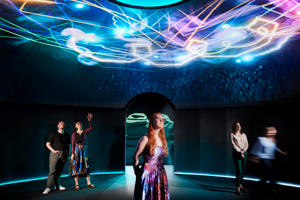
The Science Museum Group’s mission is to inspire the next generation of scientists, inventors and engineers. As the world’s leading group of science museums, we share our unparalleled collection with over five million visitors each year. We recognise that visitors are coming to museums with different levels of knowledge, experiences and perspectives on science, and our role is to demonstrate its relevance to everyone.
We use a Science Capital approach to inform everything we do for visitors – from live demonstrations in our show spaces to the individual labels that curators write for objects. Science Capital recognises the significance of what visitors know about science already, and how they feel about it.
The exhibitions and galleries we curate always aim to show that scientists come from a vast range of backgrounds and that the roles they do vary hugely too. When I worked on Mathematics: The Winton Gallery, we spent over two years identifying mathematicians in fields as diverse as furniture design, public health, climate modelling and cryptography. The gallery was designed by Zaha Hadid Architects, and I have often thought that Zaha Hadid – who once compared solving mathematical problems to sketching – brilliantly embodied diversity of thought and the creativity it unleashes.
More recently, Technicians: The David Sainsbury Gallery has showcased the essential, and sometimes hidden, roles technicians play in our lives. It shines a spotlight on their skills and mindsets and encourages visitors to step into their shoes through our interactive displays.
‘Open for all’
One of the Science Museum Group’s core values is being ‘Open for All’. We are committed to playing our part in enabling more people to engage with and participate in science. We do this by ensuring that the stories we tell, and the people we feature in our galleries and exhibitions are diverse and representative of our visitors.
A recent example comes from Medicine: The Wellcome Galleries, where we worked with a panel of people with varied experiences of disability to create a series of photographic portraits with artist Siân Davey. These portraits are a beautiful visual representation of our experience of health and medicine, and give the ‘Medicine and Treatments’ gallery a deeply human feel.
Our commitment to inclusive storytelling extends to the whole collection, and informs everything we do, from the research projects we develop, to how we catalogue and describe objects online, to what we choose to collect.
We are also aiming to grow a more diverse workforce. Within the curatorial team, we have recently recruited four new curatorial trainees through a positive action scheme. Our brilliant trainees will work with curatorial, digital and communications teams to identify and create new ways of telling stories about our collection for different audiences.
Women overcoming challenges in science
Working at the Science Museum strongly reinforces my belief in the importance of positive role models and marking moments such as the International Day of Women and Girls in Science. We feature women scientists, engineers, technologists and doctors across our programmes, from school shows to adults-only evening ‘Lates’ events, to inspire visitors to see that science could be for them.
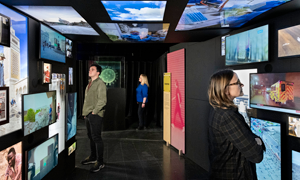
It is brilliant, for example, that our new Injecting Hope exhibition, features some of the many women who played a key role in the development of vaccines against COVID-19, including Professor Dame Sarah Gilbert and Professor Teresa Lambe from the Oxford Vaccine Group. Their stories extend and complement the examples of pioneering women linked to our collection – from mathematician Ada Lovelace, to engineer Henrietta Vansittart and medical scientist Tu YouYou.
There are many reasons to celebrate these incredible women, and history also reminds us of the challenges they faced, and the need to continually work towards greater equity.
Your journey towards a career in science starts here!
My very biased advice to girls and women who might be interested in pursuing a career in science is to start by coming to the Science Museum!
It is a wonderful place to be inspired by the huge variety of ways in which scientists play a role in our lives. As a historian of science, and museum professional, I would also advise anyone to keep an open mind about what working in, or around, science might involve. It might mean museums, television, journalism, education, politics – you can stay connected to science, and champion its value and role in society without being a scientist yourself.
Get involved
The Womanthology community can support what we’re doing by using their positions, professionally and socially, to encourage young people from a diverse range of backgrounds to explore science and museums in a creative way. Both of these fields are much larger than might be expected and there’s a place for everyone within them. As I said, keep an open mind about what professions in these industries look like.
Take a look at and share our brilliant resources for both formal or informal learning – visit our brilliant Wonderlab+ family website to get hands-on with science and maths at home or attend research seminars with the SMG Academy, and we’ve even got a podcast. Everything we do isn’t enclosed in the four walls of a museum, but visiting us is always a good place to start as well!
Coming up next
The work of caring for, and sharing, the Science Museum Group’s huge collection never ends. Next year we’ll reach a hugely significant milestone when we finish moving over 300,000 objects into a new building at the National Collection Centre in Wiltshire. These objects will eventually be accessible by curators, researchers and the wider public on behind-the-scenes tours. The scale of the building is truly awe-inspiring, and I can’t wait for more people to get to look inside!
Later in 2023, we’ll also open a new gallery about engineers, featuring over 60 engineers working in industries including farming, fashion, robotics and medicine.
Main image credit: © Science Museum Group

